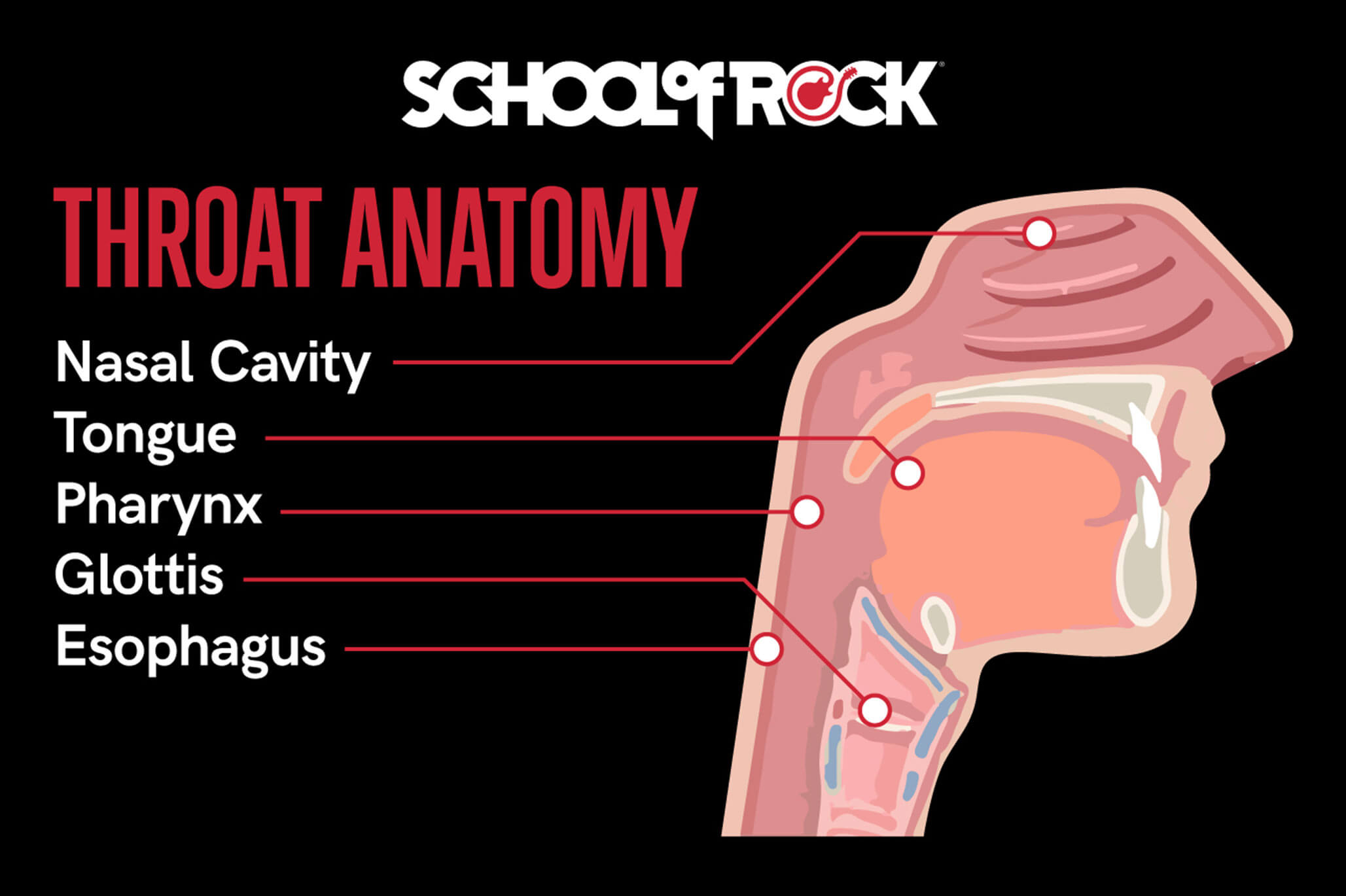Who doesn’t want to be a rockstar? I think we’ve all spent at least a little time alone in the living room or the car mentally singing our hearts out to a crowd of screaming fans. The culture of Rock and Roll is not, to most of us, associated closely with taking good care of your voice. That doesn’t mean it’s not possible though!

What is Rock Singing?
There are lots of different ways to have a “Rock voice.” Bon Scott of AC/DC has a completely different style and sound than Hayley Williams of Paramore, but both are still definitively Rock vocalists. Many groups have multiple vocalists with totally different styles within the same band. Nightwish is a great example, as they have one more traditional metal vocalist and one singer with a cleaner and often even classical sound. Bands such as Crown The Empire, Serianna, and We Came As Romans all have a screamer and a clean vocalist. All this is to say that no matter what your voice sounds like, there’s a place in Rock for you. The most important thing is to find a sound that makes both you and your voice happy! Play with different styles of music to see what feels good to you emotionally and physically.

How to Project Your Voice like a Rock Star
No matter what style you end up being drawn to, you need to learn how to project while still taking care of your Rock voice. The specifics vary depending on your style and voice, but the base of everything is a concept called Breath Support. It takes a long time and a voice teacher to get really good at it, but the short version is to take big deep breaths down into your stomach instead of up into your chest. A great way to practice is looking in the mirror to make sure your shoulders don’t rise when you breathe in. It takes a lot of practice, but the payoff for your voice is amazing. When you have your big deep breath, you then want to use it as efficiently as possible.

Using Your Whole Body
When you sing, your body is your instrument. That’s not just a cute thing we say, you are literally using your body as an instrument! Step one is to assemble your instrument correctly, so let’s talk about posture. There’s a little checklist you can go through before you sing to make sure your body is lined up right. Ears over your shoulders, shoulders over your hips, hips over your knees, and knees over your ankles. Make sure all those things are lined up, and try to keep your shoulders back and down. Try gently squeezing your shoulder blades together. Trying to sing with bad posture is like turning a guitar upside-down and trying to play it. You could probably manage, but why would you want to? You’ll definitely sound better with your instrument positioned the way it’s supposed to be.
Every instrument has a power source, a resonator, and an articulator. Let’s take an acoustic guitar for example. In a guitar, the power source is your hand. That’s where the energy that creates the vibrations is going to come from. The resonator is the body of the guitar, the place where those sound waves are going to bounce around and get bigger. The articulator in the guitar is the strings, that’s where the specificity of our sound is going to come from. In the Rock voice, the power source is our breath. The goal is not to blow as much air as possible, but to manage your breath effectively by using your abdominal muscles and intercostal muscles (the ones between your ribs). If you want to hold your abs and ribcage down and out, think of the kind of pressure that happens when you try to pick up something heavy. Balancing the muscular support with relaxation and space in your mouth and throat is one important part of projecting your voice like a Rock Star!
The Importance of Mixed Voice
The other half of projecting like a Rock Star is using your mixed Rock voice effectively. Your voice has a few different parts called registers. The main ones are “head voice” and “chest voice.” Very generally, the head voice is higher and the chest voice is lower. The chest voice is what you’re probably used to hearing in Rock and the head voice is what you’re probably used to hearing in classical singing. Both registers are very important to all kinds of singing though! Usually when we say “belting” what we mean is singing something in a chest voice loud and high. You’ve probably tried to belt something out before and either ended up switching to a breathy form of head voice or just shouting. To avoid hurting your voice, you can mix your head voice and chest voice. The best way to start learning how to have a solid mixed Rock voice is to train your head voice along with your chest voice so that you have solid ingredients to mix together later. A mixed voice is the key to singing higher and louder without hurting your throat.
Before you get any further into technique, it’s important to know how to take care of your voice. Good technique is the best way, but it takes years to develop! In the meantime, the most important things are to listen to your body, rest well, and stay hydrated. You might have heard singers say they avoid certain foods like dairy or they might use tea with honey and lemon, but the only things that will actually make your Rock voice better when it’s not feeling good are rest and time. The golden rule of singing is “If It Hurts, Don’t Do It.” If it is uncomfortable, stop. If it makes your throat hurt, stop. If it makes you lose your voice, stop. Your whole life, you only get one voice. You need to treat it well. You can always try belting that song again when your voice feels better!

The Glottal Attack
Some singers have a bit of a “raspy” Rock voice. In some cases, this may be their natural voice, others may add the grit for effect. If you want to add a little more edge to your sound, a great way to start doing that is with a Glottal Attack. Let’s break down what that means. First, let’s look at the term “glottal.” Glottal just means that you do it with your glottis, which is the scientific name for the valve that your vocal cords make over your trachea (windpipe). When you smack your vocal cords together, it’s called a glottal stroke. Using a glottal stroke at the start of your sound is a good way to make it sound harsher. Try going “huh!” like you got hit in the stomach or you’re trying to pick up something heavy. Take the little sound that makes, and try putting it on the beginning of a word you want to emphasize (as long as it starts with a vowel). It’s best to work with a voice instructor when attempting this technique. There’s no substitute for getting live feedback about your Rock voice from someone who knows what to listen for.

Use Your Emotion
Finally and most importantly of all, use your emotions! The purpose of singing is to express whatever you’re feeling. Sadness, rage, joy, love! Be emotionally generous when you sing. Try practicing in a mirror to make sure that what you’re trying to portray with your face is what’s actually coming across to the audience. Watch videos of your favorite performers singing live to get some inspiration for how to move your body and face. Choose a song that speaks to you and see what you can do with it. It’s never too early to start practicing!
About the Author
Emily Nesbitt is a classically trained singer with a degree in Vocal Performance from Virginia Commonwealth University. When she's not teaching young vocalists at School of Rock Vienna, Emily enjoys playing piano, bass, drums, and guitar for fun.




